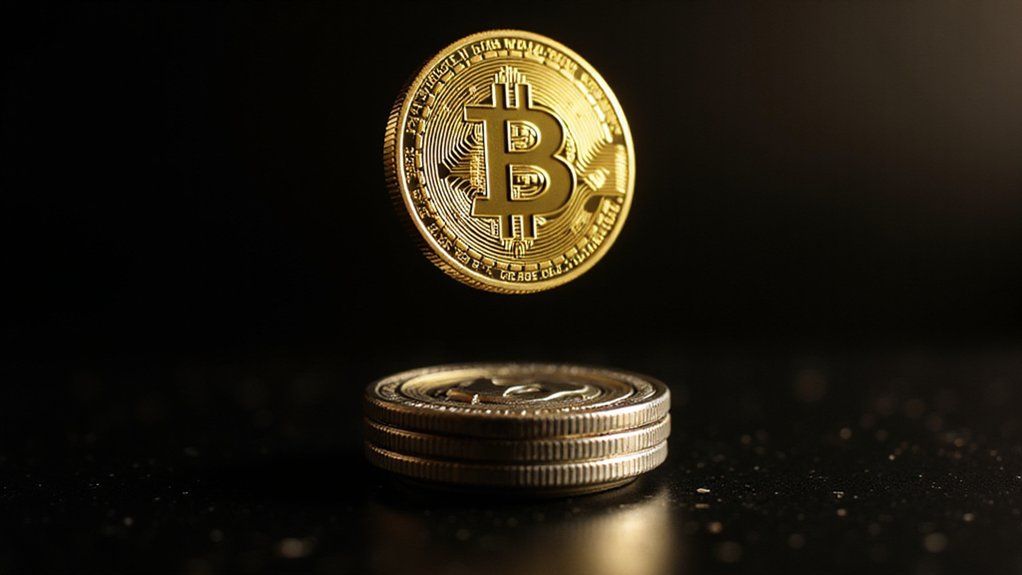While Bitcoin enthusiasts celebrate their digital gold reaching stratospheric heights of $124,457 in August 2025—a figure that would have seemed fantastical just years prior—the cryptocurrency landscape finds itself at an inflection point where institutional gravitas meets speculative fervor in ways that defy traditional market logic.
The transformation from fringe digital experiment to institutional darling appears complete, with ETF holdings swelling to $33.6 billion and institutional ownership quintupling from a mere 5% in 2023 to 25% by Q2 2025.
The mathematics underlying Bitcoin’s ascent toward the widely forecasted $175,000-$200,000 range reveal a supply-demand imbalance of almost comical proportions.
Consider this: mining operations will produce approximately 700,000 new Bitcoin over the coming period, while institutional demand hovers around $3 trillion—a disparity that makes traditional scarcity economics appear quaint.
A trillion-dollar appetite chasing mere hundreds of thousands of coins—scarcity economics elevated to theatrical absurdity.
The approaching 2028 halving event will further constrict supply, creating conditions that some analysts suggest could propel Bitcoin into seven-figure territory by 2030.
Federal Reserve interest rate cuts and dollar weakness have transformed Bitcoin from speculative curiosity into inflation hedge, while Lightning Network improvements and BRC-20 token standards enhance utility beyond mere store-of-value narratives.
The whispered rumors of sovereign entities secretly accumulating Bitcoin reserves (with claims of 200,000 BTC held by a single nation) add geopolitical intrigue to an already compelling investment thesis.
Yet amid Bitcoin’s institutional coronation, emerging altcoin technologies present formidable challenges to its dominance.
Enhanced scalability solutions, superior transaction efficiency, and innovative DeFi capabilities suggest that Bitcoin’s current supremacy may face unprecedented competition. The evolution of DeFi platforms into sophisticated financial ecosystems further challenges Bitcoin’s dominance as these platforms offer complex financial services that extend far beyond simple digital asset storage.
The very institutional adoption that strengthens Bitcoin’s position also legitimizes the broader cryptocurrency ecosystem, potentially creating pathways for next-generation digital assets to capture market share.
Price predictions from DigitalCoinPrice and other analytical groups suggest Bitcoin could experience volatility between $83,800 and $205,000 throughout 2025, reflecting the market’s struggle to reconcile fundamental value with speculative momentum. Bitcoin’s resilience becomes particularly remarkable when considering its survival through numerous market crashes, regulatory bans, and exchange hacks since its 2009 creation by the pseudonymous Satoshi Nakamoto.
Whether Bitcoin maintains its crown while reaching these ambitious price targets—or whether an altcoin rival successfully rewrites the rules—remains the defining question of this extraordinary digital asset epoch.









